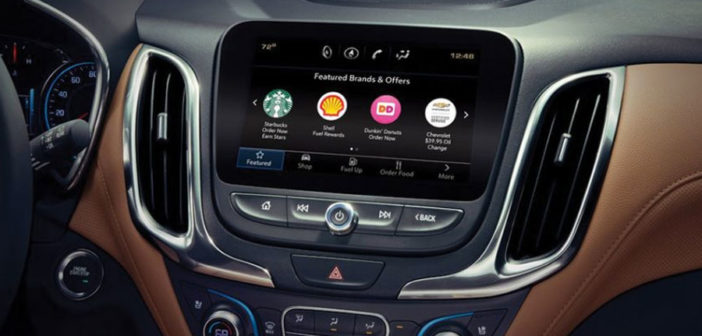Using voice and the IoT to reach consumers
While autonomous cars won’t be in every garage anytime soon, today’s vehicles have never been more connected. That’s leading marketers, agencies and automakers to transform cars into the next media and marketing platform.
Radio once held drivers hostage as the only form of in-car entertainment, said Scott Symonds, managing director of AKQA Media, adding it was ideal for the frequency and localization of messaging. “[It] was a great advertising opportunity that’s sort of fallen out as terrestrial radio has shrunk a little bit,” he said.
Cars won’t be functioning as mere extensions of phones or laptops with ads on the dash, but Symonds thinks marketers will make cars and the brands inside them more useful. That could mean increasingly localized ad buys on maps, ad-sponsored charge-ups for electric vehicles or brand-subsidized LTE or Wi-Fi.
At the 2017 Consumer Electronics Show, several major auto brands—including BMW, Ford, Nissan and Volkswagen—announced partnerships with Amazon and Microsoft to put voice AI systems into vehicles, promising to assist drivers with tasks like turning on lights, accessing security systems and opening garage doors.
Last fall, Ford went a step further, allowing drivers to order Starbucks using Alexa. “We don’t want to distract drivers,” said James Buczkowski, who heads up advanced engineering at Ford. “We don’t want to annoy drivers, but we do want to create value for consumers—what they need and when they need it.”
In December, GM debuted Marketplace, an in-dash platform that lets drivers reserve tables at restaurants like Applebee’s, order from coffee shops like Dunkin’ Donuts and find gas stations such as Shell. A few months earlier, Adobe’s new platform let marketers analyze users’ driving habits while targeting in-car audio ads powered by Sensei, its AI platform.
Ad industry trade groups are also working to better use data. The IAB’s Connected Car Working Group, a network of executives from the likes of AT&T, Nielsen, GroupM, The Weather Company and Cumulus Media, is looking at how technology can enable communication not just between the car and the manufacturer, but also through collecting data externally or sending it to third parties.
According to Michael Ramsey, an auto analyst at Gartner, marketers need to connect with drivers subtly, reaching them at the right time. Already, agencies are targeting drivers. Mindshare, for instance, is working with Pandora to create audience segments based on who’s behind the wheel.
“Capturing that data will help us build an insight that we may not otherwise know about a certain set of consumers,” said Jeff Malmad, managing director of Mindshare North America’s Life+.
Waze, the Google-owned app that helps drivers navigate traffic, already has brand-sponsored tools. Along with sponsored location pins to the nearest McDonald’s or parking lot, Waze uses data-powered audio ads, and famous characters tell drivers where to go while subtly promoting their upcoming movies. Suzie Reider, head of Waze ads in North America, said its next step is helping drivers in other ways after partnering with Allstate this fall to provide roadside assistance.
“It depends what you’re trying to sell and the action you’re trying to create,” said Steve DiRado, group account director at PHD. “There are better data signals for somebody to consider a $30,000 car, but to consider a $3 coffee, an $8 sandwich, or even if you know the person is going home soon, hit them with a ‘tune in’ message for something on TV.”
–
This article first appeared in www.adweek.com
Seeking to build and grow your brand using the force of consumer insight, strategic foresight, creative disruption and technology prowess? Talk to us at +9714 3867728 or mail: info@groupisd.com or visit www.groupisd.com




